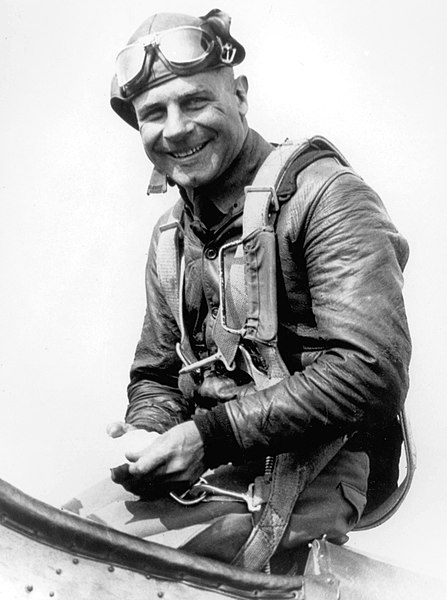James Harold Doolittle was an American military general and aviation pioneer who received the Medal of Honor for his raid on Japan during World War II, known as the Doolittle Raid in his honor. He made early coast-to-coast flights, record-breaking speed flights, won many flying races, and helped develop flight-test instrument flying.
General James Harold Doolittle
Doolittle on his Curtiss R3C-2 Racer, the plane in which he won the Schneider Trophy in 1925
Doolittle in a pre-World War II photo
Bust of General Doolittle at the Imperial War Museum, Duxford
The Doolittle Raid, also known as Doolittle's Raid, as well as the Tokyo Raid, was an air raid on 18 April 1942 by the United States on the Japanese capital Tokyo and other places on Honshu during World War II. It was the first American air operation to strike the Japanese archipelago. Although the raid caused comparatively minor damage, it demonstrated that the Japanese mainland was vulnerable to American air attacks. It served as an initial retaliation for the December 7, 1941, attack on Pearl Harbor, and provided an important boost to American morale. The raid was planned by, led by, and named after Lieutenant Colonel James Doolittle. It was one of six American carrier raids against Japan and Japanese-held territories conducted in the first half of 1942.
Jimmy Doolittle and his B-25 Mitchell prior to taking off from the USS Hornet for the raid
Lieutenant Colonel Doolittle wires a Japanese medal to a bomb, for "return" to its originators.
A B-25 Mitchell taking off from USS Hornet for the raid
B-25 Mitchells aboard USS Hornet








